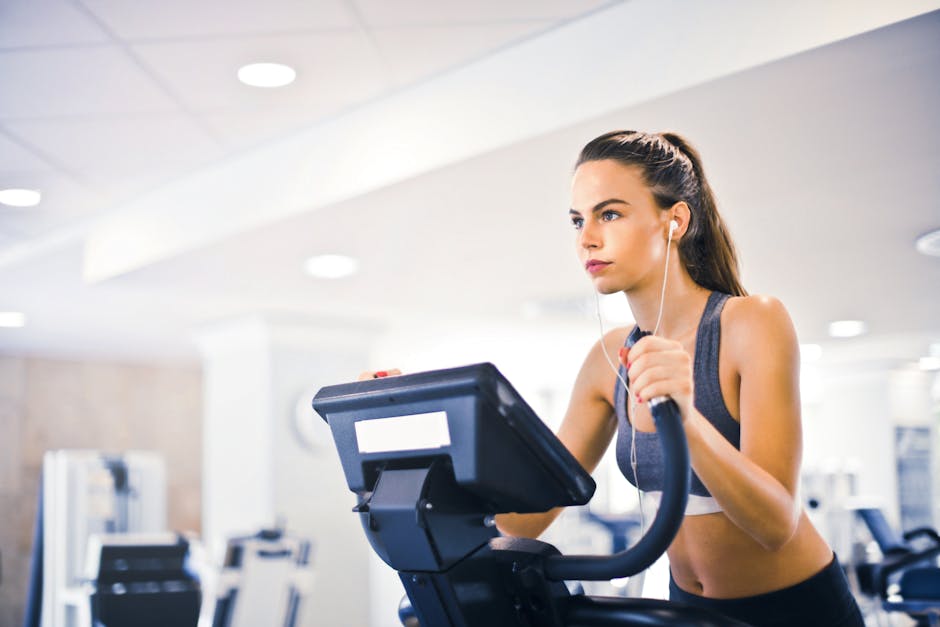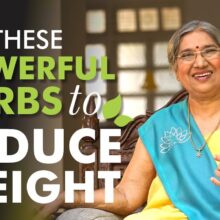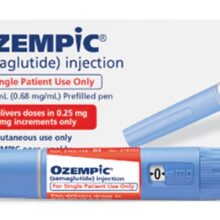Podcast: Exercise and Weight Loss
Changes in your diet not only affect you physically, and physiologically inside, but also mentally, how well you think, psychologically, and how well you feel. But you’ll never know just how good you can feel until you put it to the test and try eating healthy. Welcome to the NutritionFacts Podcast. I’m your host, Dr. Michael Greger.
Today we look at the relationship between exercise and weight loss. And we start with a question: can exercising in cool water undermine weight loss by leading to an increase in post-workout calorie intake? Swimming and aquatic exercise in general, are popular alternatives to land-based activities such as walking or biking. The buoyancy helps take some of the weight-bearing stress off of joints, but swimming appears to be less effective for weight loss. Obese women were randomized into an hour a day of walking, cycling, or swimming.
Six months later the walkers lost an average of 17 pounds, the cyclists lost an average of 19 pounds, and the swimmers didn’t lose an ounce (in fact, they gained 5 pounds).
Gauging skin folds to estimate body fat, the measurements slimmed more than 40 percent in the walking and cycling groups, but there was no change at all in the swimming group. What’s going on? And check this out. The more the women walked, the more they lost weight.
The more the women biked, the more they lost weight. But the more laps they did didn’t seem to matter. Even an hour a day. No weight loss. What is going on?
Well, it turns out that some exercise boosts appetite more than others. While land-based exercise does not stimulate a compensatory increase in appetite and calorie intake, the same cannot be said for water-based exercise. In contrast to walking, in contrast to running, and in contrast to cycling, swimming can significantly heighten hunger within hours. This may explain why swimmers tend to have more body fat than runners of equal caliber, even though they may be expending more calories during training. If anything, you’d think swimming might lead to even greater weight loss since you’re losing heat to the water.
But swimming didn’t seem to work at all. The cold, it turns out, maybe the culprit. If you exercise in warm water (about 90o F) it does not boost your appetite more than exercising on land. After the same workout in cool water (about 70° F), people can end up eating more than twice as much at a meal an hour later. Maybe they’re just burning off extra calories to stay warm?
No, even at the same number of calories expended, people eat hundreds of calories more after exercising in cold water.
Offered a buffet after burning off about 500 calories in cool water, people eat nearly 900 calories, hundreds more than after exercising in warm water or just staying dry. So, they ended up taking in about twice as many calories as they exercised. No wonder swimming doesn’t appear useful for weight loss. Would the same thing happen under different temperatures on land?
A team of British researchers sought to find out, randomizing people to briskly walk for 45 minutes on a treadmill in the cold (about 46° F) or closer to room temperature (about 68° F). Participants were then presented with a buffet meal in which their eating was covertly recorded. And calorie intake was significantly greater after exercising in the cold. Though walking is often prescribed for overweight individuals, the researchers conclude, “If walking was to take place in a cold environment, such as in winter, then this may stimulate food intake.” In the warmer months, though, obesity researchers suggest exercising outdoors may be preferable to an air-conditioned gym.
All studies to date on the effects of hot and cold environments have found that exercising in cool water or under cool conditions on land led to an increase in post-workout calorie intake.
What about a quick dip in the pool after you exercise? Australian researchers found that immersion in water for 15 minutes—cool or warm— after a running session resulted in increased calorie intake. What is it about getting wet that whets your appetite? Maybe they got a chill after getting out before they could change into dry clothes?
This suggests that though a cool shower after a workout may be invigorating, it might be better to stick to hot. Next up, we look at what role inactivity has played in the obesity epidemic.
Right now, almost 2/3 of Americans are overweight. And by 2030, more than 1/2 of our population may be clinically obese. Childhood obesity has tripled and most of them will grow up to be overweight as well.
The United States may be raising the first generation since our nation’s founding which will have a shorter predicted life span than that of the previous generation. The food industry blames… inactivity.
You just need to move more. But what is the role of exercise in the treatment of obesity? There’s considerable debate in the medical literature today about whether physical activity has any role whatsoever in the epidemic of obesity that’s swept the globe since the 80s. The increase in calories per person is more than sufficient to explain the U.S.
The epidemic of obesity. If anything, the level of physical activity over the last few decades has gone up in both Europe and North America. This has important policy implications. Yes, we still need to exercise more, but the priorities for reversing the obesity epidemic should focus on the overconsumption of calories. To work off the increased caloric intake, which for kids it’s like an extra can of soda and small fries, compared to what they were eating back in the 70s, and for adults it is like an extra Big Mac a day, to work that off you’d have to walk 2 hours a day, 7 days a week.
Exercise can prevent weight gain, but the amount required to prevent weight gain may be closer to twice the current recommendations. Public health advocates have been experimenting with including this kind of information. The fast-food menu labeled with calories and the number of miles to walk to burn those calories appeared to be most effective in influencing the selection of lower-calorie meals. Now exercise alone may have a small effect, and that small effect can make a big difference on the population scale. A 1% decrease in BMI nationwide might prevent millions of cases of diabetes and heart disease, and thousands of cases of cancer.
..
But why don’t we lose more weight from exercise? Maybe because we’re just not doing it enough. The small magnitude of weight loss observed from the majority of exercise interventions, you know where they make people exercise, may be primarily due to how low the doses are of the prescribed exercise.
People tend to overestimate how many calories are burned by physical activity. For example, there’s this myth that a bout of sexual activity burns a few hundred calories. So, hey, you could get a side of fries with that. But if you hook people up and measure energy expenditure during the act and your study subjects don’t get too tangled up with all the wires and hoses, though it may be merely the metabolic equivalent of calisthenics, given that the average bout of sexual activity only lasts about 6 minutes, a young man might expend approximately 21 calories during sexual intercourse.
Of course, he would’ve spent roughly 1/3 of that just lying around watching t.
v.– just basal metabolism. So the incremental benefit is plausibly on the order of 14 calories. So maybe we could have, like, 1 fry with that. Finally, today, what’s more important: is diet or exercise when it comes to weight loss.
You may be surprised at the answer. When trying to lose weight, which is most important: diet or exercise? This is what a survey found recently: “The vast majority of those trying to lose or maintain weight believe that both monitoring food and beverage consumption and physical activity are equally important in weight management and weight loss.” Most people go with equally important, and then exercise, and then diet. And, most people are wrong.
Identified as one of the most common misconceptions about obesity in this recent review, is the “Confusion about the leverage of exercise on body weight.” “Unfortunately, the energy balance equation [you know, calories in have to equal calories out] suggests that energy intake and energy expenditure occupy equivalent roles in determining energy balance, when in fact the factors governing energy intakes influence the energy balance far more powerfully than the factors determining resting energy expenditure.” What we put in our mouths is most important.
For example, to walk off the calories found in a single pat of butter, you’d have to add an extra 700 yards to your stroll that evening. A quarter-mile jog for each sardine we put in our mouth— and that’s just the edible part.
And those who choose to eat two chicken legs better get out on their own two legs, and run an extra three miles that day to outrun weight gain. And that’s for steamed chicken; skin removed. We would love it if you could share with us your stories about reinventing your health through evidence-based nutrition.
Go to nutritionfacts.org/testimonials.
We may share it on our social media to help inspire others. To see any graphs, charts, graphics, images, or studies mentioned here, please go to the NutritionFacts Podcast landing page. There you’ll find all the detailed information you need – plus, links to all of the sources we cite for each of these topics. My last two books are “How to Survive a Pandemic” and “How Not to Diet Cookbook”.
Get ready this year for the launch of How Not to Age.
And, of course, all the proceeds I receive from the sales of all my books go directly to charity. NutritionFacts.org is a nonprofit, science-based public service, where you can sign up for free daily updates on the latest in nutrition research with bite-sized videos and articles uploaded nearly every day. Everything on the website is free. There are no ads, no corporate sponsorships, no kickbacks.
It’s strictly non-commercial. I’m not selling anything. I just put it up as a public service, as a labor of love, as a tribute to my grandmother, whose own life was saved with evidence-based nutrition.
Read More: Interview with Ashley Cotter-Cairns | Goldin Auctions | Market Report
𝗦𝗟𝗜𝗠𝗖𝗥𝗬𝗦𝗧𝗔𝗟 The World’s Only Slimming Crystal Water Bottles! The unique combination of crystals is so powerful that it has been used for decades by crystal healing experts to help thousands of men and women change their lives for the better ➯➱ ➫ ➪➬ 𝗦𝗟𝗜𝗠𝗖𝗥𝗬𝗦𝗧𝗔𝗟 [Official] ᵘᵖᵗᵒ ⁷⁰% ᵒᶠᶠ ᵗᵒᵈᵃʸ! As Slim Crystal products are in high demand, the SlimCrystal is one of the best and most affordable weight loss products that’s available on the market. Grab your SlimCrystal bottle now!








